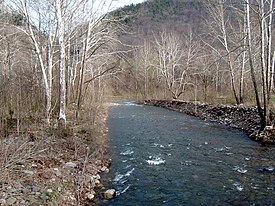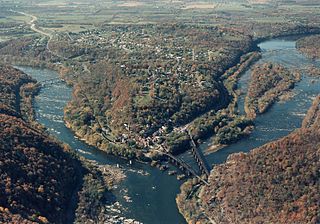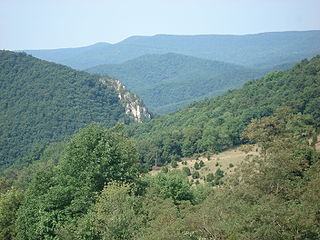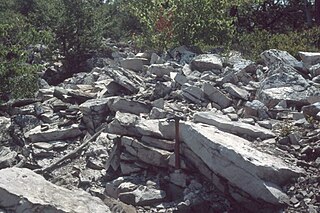| Seneca Creek | |
|---|---|
 Seneca Creek just upstream of its mouth | |
| Location | |
| Country | United States |
| State | West Virginia |
| Counties | Pendleton |
| Physical characteristics | |
| Source | Slab Camp Run |
| - location | Allegheny Mountain, Pendleton County, WV |
| - coordinates | 38°43′29″N79°33′23″W / 38.72472°N 79.55639°W |
| - elevation | 3,912 ft (1,192 m) [1] |
| 2nd source | Trussel Run |
| - location | Spruce Mountain, Pocahontas County, WV |
| - coordinates | 38°42′47″N79°32′31″W / 38.71306°N 79.54194°W |
| - elevation | 3,944 ft (1,202 m) [2] |
| Source Confluence | |
| - location | Pendleton County, WV |
| - coordinates | 38°43′04″N79°32′46″W / 38.71778°N 79.54611°W |
| - elevation | 3,747 ft (1,142 m) [3] |
| Mouth | North Fork South Branch Potomac River [4] |
| - location | Seneca Rocks, WV |
| - coordinates | 38°09′42″N81°11′47″W / 38.16167°N 81.19639°W Coordinates: 38°09′42″N81°11′47″W / 38.16167°N 81.19639°W |
| - elevation | 1,532 ft (467 m) |
Seneca Creek is a 19.6-mile-long (31.5 km) [5] tributary of the North Fork of the South Branch of the Potomac River located entirely within Pendleton County, West Virginia, USA.

A tributary or affluent is a stream or river that flows into a larger stream or main stem river or a lake. A tributary does not flow directly into a sea or ocean. Tributaries and the main stem river drain the surrounding drainage basin of its surface water and groundwater, leading the water out into an ocean.

Pendleton County is a county located in the U.S. state of West Virginia. As of the 2010 census, the population was 7,695, making it the fifth-least populous county in West Virginia. Its county seat is Franklin. The county was created by the Virginia General Assembly in 1788 from parts of Augusta, Hardy, and Rockingham Counties and was named for Edmund Pendleton (1721–1803), a distinguished Virginia statesman and jurist. Pendleton County was strongly pro-Confederate during the American Civil War; however, there were pockets of Union support.

West Virginia is a state located in the Appalachian region in the Southern United States and is also considered to be a part of the Middle Atlantic States. It is bordered by Pennsylvania to the north, Maryland to the east and northeast, Virginia to the southeast, Kentucky to the southwest, and Ohio to the northwest. West Virginia is the 41st largest state by area, and is ranked 38th in population. The capital and largest city is Charleston.
Contents
Seneca Creek lies within the Appalachian Mountains, in the Spruce Knob-Seneca Rocks National Recreation Area of the Monongahela National Forest. It is formed by two spring-fed streams, Slab Camp Run and Trussel Run, on the western flanks of Spruce Mountain to the north of Spruce Knob. It empties into the North Fork of the South Branch at the community of Seneca Rocks near the base of the Seneca Rocks sandstone cliff formation.

The Appalachian Mountains, often called the Appalachians, are a system of mountains in eastern North America. The Appalachians first formed roughly 480 million years ago during the Ordovician Period. They once reached elevations similar to those of the Alps and the Rocky Mountains before experiencing natural erosion. The Appalachian chain is a barrier to east–west travel, as it forms a series of alternating ridgelines and valleys oriented in opposition to most highways and railroads running east–west.

Spruce Knob-Seneca Rocks National Recreation Area is a U.S. National Recreation Area (NRA) located within the Monongahela National Forest of eastern West Virginia, USA.

The Monongahela National Forest is a national forest located in the Allegheny Mountains of eastern West Virginia, USA. It protects over 921,000 acres of federally owned land within a 1,700,000 acres proclamation boundary that includes much of the Potomac Highlands Region and portions of 10 counties.












